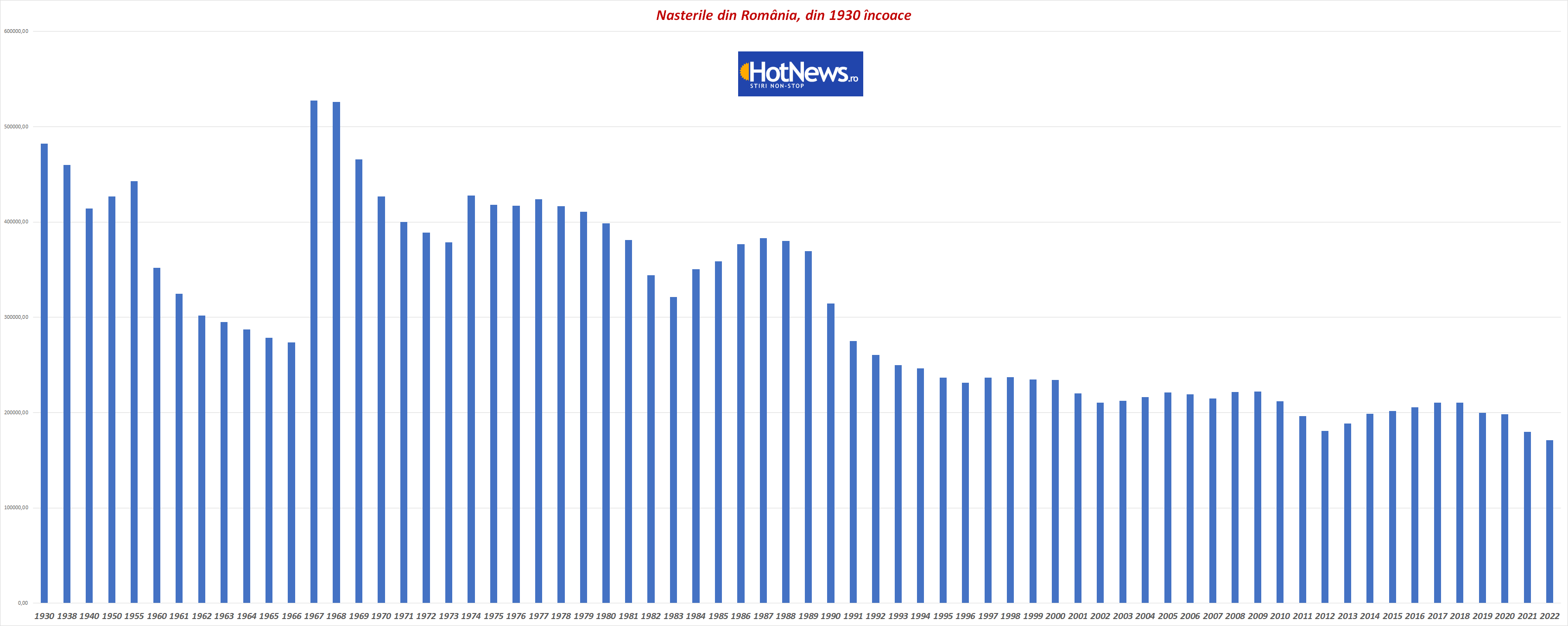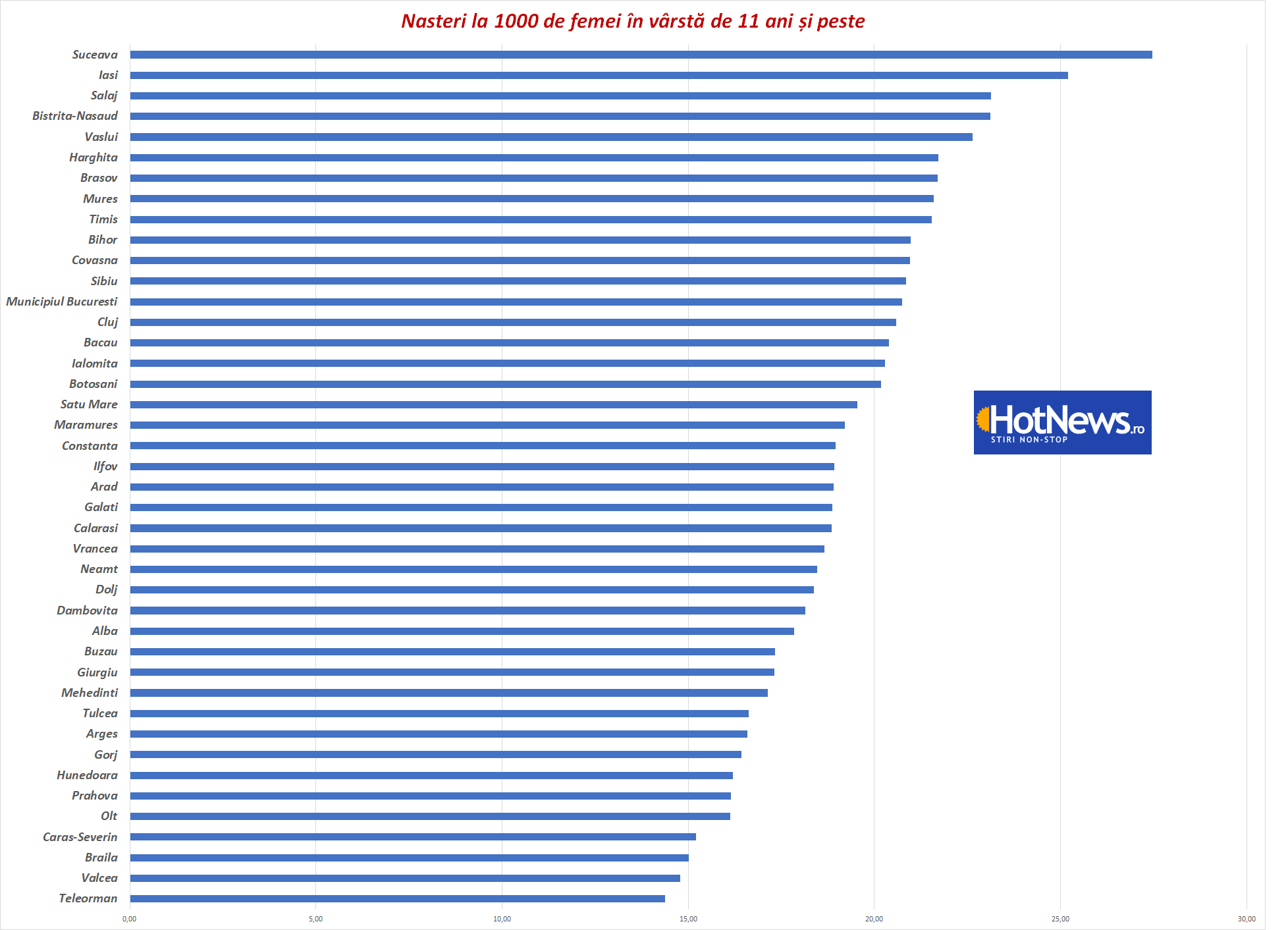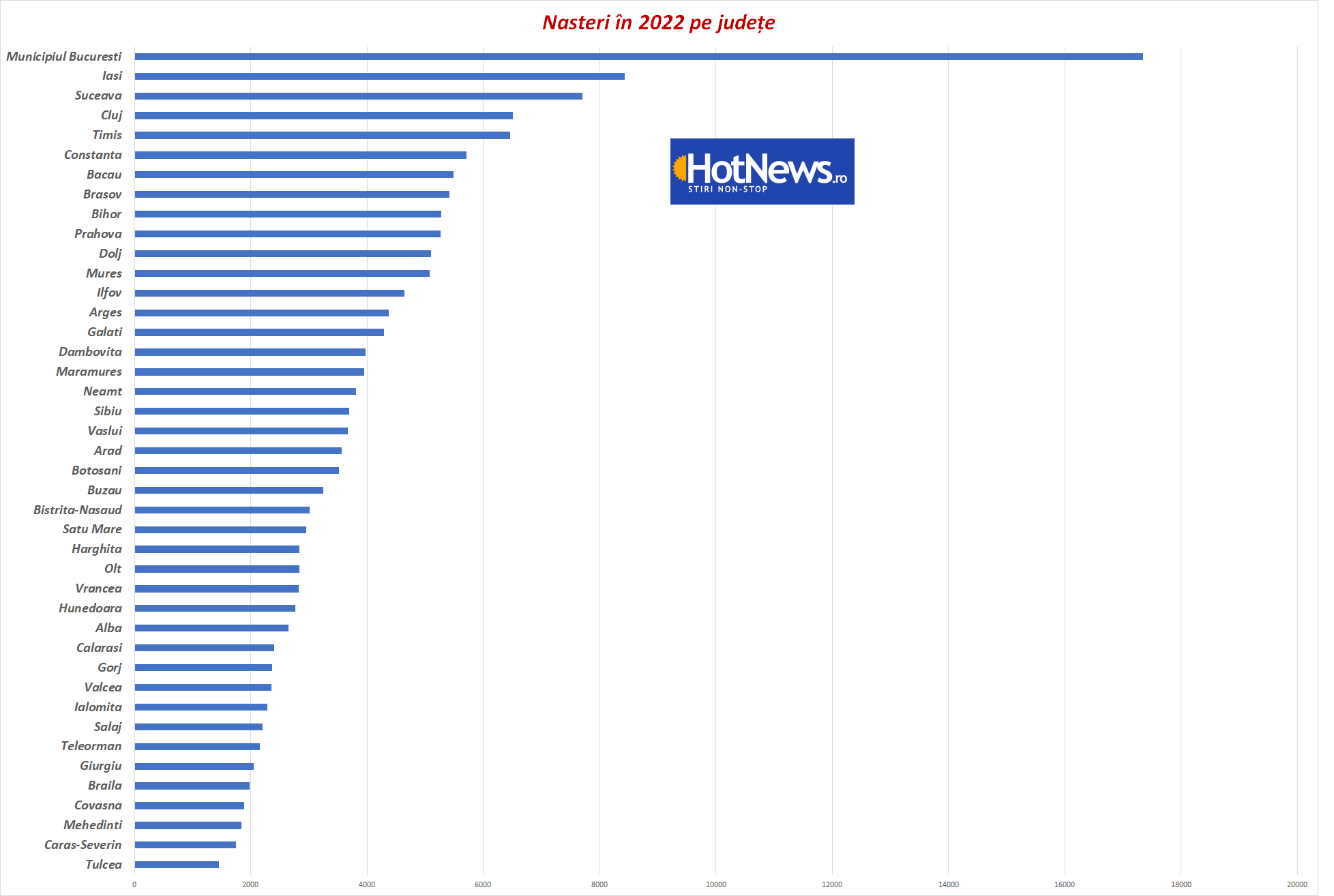
Every year fewer and fewer children are born in Romania, which has great economic consequences, but experts also talk about a danger: the close connection between the decline in the birth rate and the rise of populism.
Just over 60,000 babies were born in the first 5 months, compared with more than 73,000 born in the first 5 months of 2022, according to a report published on Monday in Statistics.
In large cities with dense and growing populations, economies tend to thrive and cosmopolitanism is embraced, according to The NY Times (subscription may be required). Where populations are shrinking, especially in rural communities and small towns, economies often stagnate and populism thrives.
The problems usually associated with declining birth rates are related to increased pressure on pension budgets. Fewer children today means fewer workers in the future, which means fewer pension contributions.
This could be corrected (as it is done in our country, by the way) by increasing the quotas of immigrants. But the arrival of these immigrants can fuel populist sentiments, according to one of the authors of the article. In short: the population is decreasing, immigration is increasing, people are afraid of foreigners, become more xenophobic and therefore more inclined to support nationalist parties. .
In April 2023, Italian Agriculture Minister Francesco Lollobrigida, one of Prime Minister Giorgia Maloney’s closest allies, caused outrage when he warned against the “ethnic replacement” of Italians by migrants.
From 2.3 children born to a Romanian woman on average in 1960, the number of births decreased to 1.6. Which means fewer and fewer children and more and more elderly people
- Increasing level of dependence. If the retirement age remains fixed and life expectancy increases, the number of those who will rely on the state pension will increase, and the number of those who are active in the workforce – those who provide money from the pension budget – will decrease. .
- Increase in public spending on health care and pensions. Each person who retires creates a “hole” in the state budget because the taxes they pay on their income are lower (the pension is lower than the salary and the state will collect less money at the same tax rate). This combination of higher spending on pension budgets and lower tax revenues should cause concern for current and future governments. Because in the medium to long term, if we don’t intervene through pro-natalist policies, the budget will have serious deficit problems.
- Increase in labor taxes. Romanians who will work may be taxed more so that the state can support the growing mass of pensioners
- Structural changes in the economy. The increase in the number of pensioners will lead to the development of the market for goods and especially services related to the elderly (home care, nursing homes, pharmaceuticals and personal hygiene products, etc.).
The solution could come in three ways: raising taxes in the future, raising the retirement age, or a truly effective pro-natalist policy
Fertility methods 130 years ago
If her desire (to give birth to a child) is not fulfilled in the first years of marriage, a woman first begins to pray to God and go to monasteries to be read to. If they do not give an effect, then herbal juices are prepared. Most often, some orchids, white lilac and roses are used. All this is boiled in honey and the resulting juice is drunk, – writes academician Simion Florea Marian in his work “Nascerea la romani”, 1892 edition.
The whole book is fabulous. She explores the customs and traditions associated with childbirth in Romanian culture, including the preparation for childbirth, the rituals and superstitions associated with the event, and the role of women in childbirth.
The following have been born in Romania since 1930:

True (in 1905): We see an increase in the living forces that sustain the life of the nation
Analysis of the population movement in 1904 from the very beginning proves that the demographic process was favorable for the country. In spite of the terrible drought which caused the almost complete destruction of the crops, and especially of the corn, the population still went without hesitation to the upward trend which it reached in 1903, and gave a great increase in the birth rate over the dead.
From 96,234 units, which was the difference between the number of births and the number of deaths in that year, the excess rises this time to 100,241, which is the highest figure recorded so far in the demography of Romania. This proves that the consequences of economic restrictions are not immediately manifested in the movement of the population, at least in the part of acts that determine its natural growth.
A comparison of the general results of the population movement in 1903 compared to previous years is clearly visible from the following: In 1899, 128,559 boys were born, 121,759 girls, and a total of 250,318 stillbirths. Surplus births: 85,418.
In 1900 there were 234,843 births and 146,144 deaths, with an excess of 88,699 births. In 1901, 240,704 were born, of which 124,105 were boys and 116,509 were girls, 160,351 died, with an excess of 80,353 births.
If to the figure of 5,956,690 inhabitants, which constituted the stable population of the country in December, 1899, we add the excess of births over deaths recorded in the following five years, we find that the probable population of Romania on January 4, 1905, is estimated at 6,392 273
The fact deserves to be reported and remembered, especially since it has been repeated for 2 years in a row; it means the multiplication of the living forces which sustain the life of the nation, a multiplication which is constantly manifested in our country
The graph below shows the districts and the number of births per thousand women aged 11 and over:

And below is the number of births by district, in absolute numbers:

fffffffffffffffffffffff
Source: Hot News
Lori Barajas is an accomplished journalist, known for her insightful and thought-provoking writing on economy. She currently works as a writer at 247 news reel. With a passion for understanding the economy, Lori’s writing delves deep into the financial issues that matter most, providing readers with a unique perspective on current events.